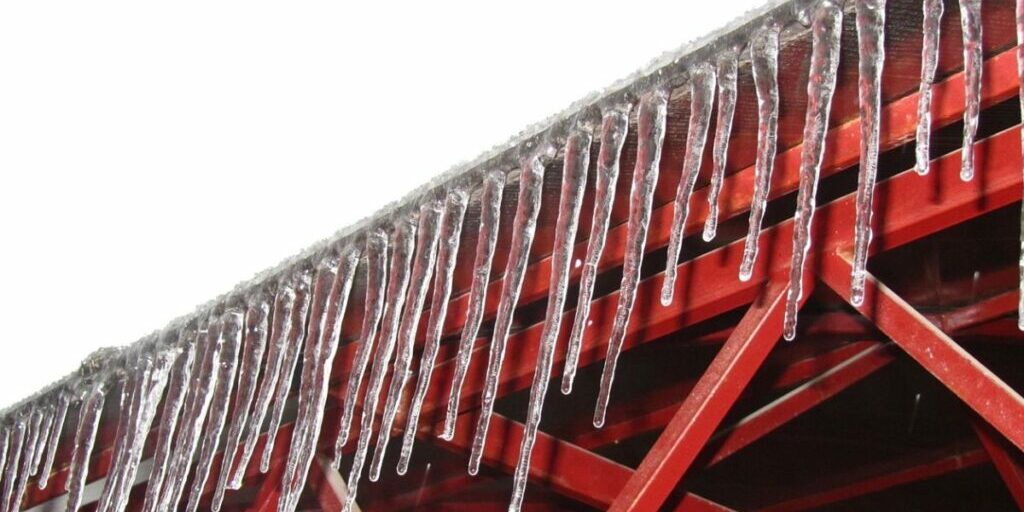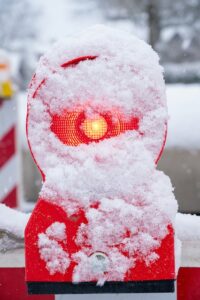How to Prevent Cold Weather Construction Accidents

Cold Weather Construction Accidents are dangerous, but can be prevented by taking measure to keep your crews safe.
Recently OSHA announced it’s targeting heat hazards by adding new work safety measures. As many as 38 people die a year from heat related incidents and many more experience lost time. Among the stats cited, when the heat index breaks 80F, serious heat-related illnesses become more frequent.
While new heat related safety measures are being formalized, the official onset of winter is just a few weeks away. Much of the country is already experiencing freezing temperatures – in fact, even Hawaii was under Blizzard watch just a week ago. Many US construction sites have cold weather to contend with, which introduces a very different array of hazards than heat.
What cold weather hazards should construction companies be aware of and how can they prevent accidents and cold stress?
This varies greatly by region and with the current weather. While a blizzard in Hawaii may be cause for national news, it would be much more expected in the Midwest. Some regions are well prepared for cold weather events.
Osha provides a detailed guide on how to keep crews safe during cold fronts. Here are some of the main things to watch out for during cold weather.
Keep reading for,
Slips & Falls
As we noted recently in our review of helmets that protect from side impacts, slips and falls are much more common than impacts from above. Hence the growing movement to have helmets that protect against both with a chin strap and a multidirectional impact absorption system. How much more common are slips and falls during cold, icy conditions? Even when we know we’re walking on an icy path, it’s still easy to lose one’s footing and have a cold weather construction accident.
When construction managers see icy conditions, they can call for deicing to prevent people or machines from losing traction. Footwear with good traction should be required so people are less likely to slip on the ice. Ladders or other equipment should be secured and inspected to ensure they’re stable. Special training should be given, in particular for those working on a roof or higher up.

Frostbite
Probably most people have experienced some degree of frostbite when out in the cold. Construction workers are much more susceptible to it as their shifts are typically a full day’s work.
Workers need to be trained and informed that if they start to experience frostbite that they need to get out of the cold and warm themselves up. Many workers may feel compelled to keep working. Ensuring they’re trained to keep themselves safe is one of the first ways to address frostbite.
Breaks should be scheduled and heating devices should be located around the job site so workers have a way to warm up. Hot drinks should be made available, along with dry replacement clothing. If their gloves are wet, they’ll need another pair before heading back on site. If the frostbite is extreme, call medical professionals immediately.
Hypothermia
Hypothermia is where one’s entire body temperature drops to less than 95F. The symptoms range from uncontrolled shivering, to loss of coordination, slurring words, confusions, or going unconscious.
The response is much like that of frostbite – get dry, get warm, and seek medical attention. Once the person experiencing hypothermia is in a warm place, remove all wet clothing and help warm them up. Heating pads, or heated up water bottles, can be of great assistance.
Immersion & Trenchfoot
Wet feet lose heat 25 times faster than dry feet. Even if a worker isn’t experiencing frostbite or hypothermia, having wet feet for an extended period of time can lead to trenchfoot. Its symptoms are reddening skin, tingling, pain, swelling, leg cramps, numbness, and blisters.
If someone’s suffering from trenchfoot, remove their wet shoes or boots and wet socks, dry their feet, and keep their feet elevated. Avoid walking or going back to work, and seek medical attention.
Conclusion on How to Prevent Cold Weather Construction Accidents
In all cases, basic and advanced first aid training is extremely helpful. Ensuring all workers are dressed appropriately for the conditions is also very important. Some may not keep as close of an eye on the weather and dress with too few layers. Others may think it unacceptable to stop work over being cold and that their jobs may be at risk. It’s important that workers know that the phrase “safety never takes a day off,” also applies to staying safe from cold related stress and accidents.
While OSHA goes through the process of revising the heat safety protocols, the guidance on handling extreme cold is at the ready. Safety huddles and special trainings will go a long way in ensuring workers stay safe during cold spells.




